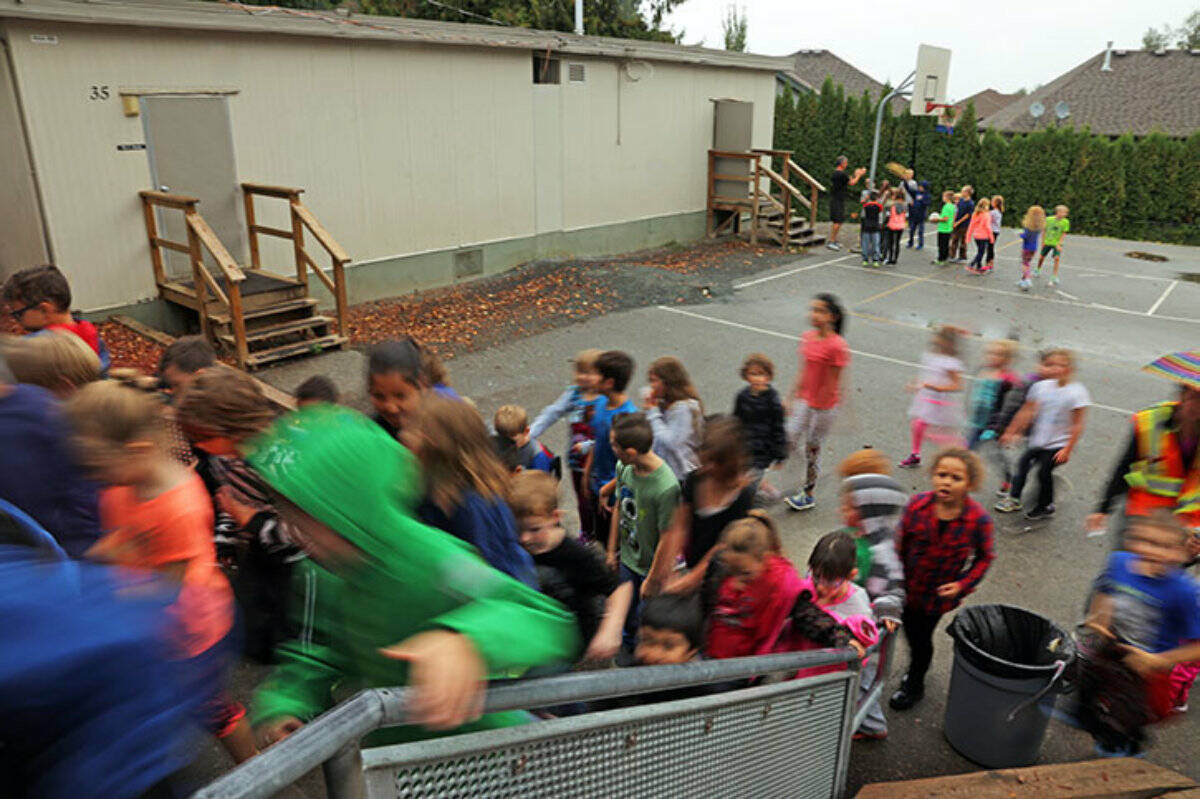The president of the union representing public school teachers in British Columbia predicts more uncertified teachers working in schools.
Chilliwack schools recently advertised for “casual uncertified teachers teaching on call” to fill a shortage of substitute teachers. British Columbia Teachers’ Federation President Clint Johnston said the move is a sign of worse to come.
Johnston acknowledged uncertified teachers are common in rural and remote communities, but expressed disappointment that the teacher shortage has reached such an “extreme” that urban districts in the Fraser Valley feel the need to advertise for them.
The province can help fix the problem in the short-term by speeding up certification of teachers, Johnston said. Other measures include incentives to attract working teachers or new graduates from other provinces. Johnston said the government should also create more schools training future teachers in remote and rural areas, so aspiring teachers are more likely to stay there.
“But it is also going to take some time to undo the damage that was done over a long period of time in terms of our level of compensation,” said Johnston. “It improved with the last contract, but it could still improve. Housing is a serious problem.”
The School Act allows school boards to hire (TTOC) who do not hold a teaching certificate to help fill short-term, temporary needs, often due to illness. School districts may also require TTOC on call to get a Letter of Permission (LOP) from the province.
It is not clear how many TTOCs are currently working in the British Columbia, but the province has issued 84 LOPs for the 2022/23 school year, down from 125 in 2021/2022.
Should school boards hire temporary teachers, they can only work for up to 20 consecutive days when certified teachers or temporary teachers holding LOPS are not available.
RELATED: Labour shortage prompts first Lower Mainland school district to hire uncertified teachers
UBC Faculty of Education Associate Professor Jason Ellis said the problem of TTOCs is one of supply and demand. Right now, enrolment has increased more quickly than the supply of teachers and it is difficult to quickly scale up the supply, he said.
While using TTOCs is not ideal, Ellis also warns against an over-supply of teachers. Not only are they are trained at the public’s expense, but it would not be fair to train them, then leave them without jobs. For now, Ellis does not see the uptick in enrolment increasing. That does not mean that the current teachers’ supply gets an apple.
Minster of Education and Child Care Rachna Singh said school districts across the province are facing labour pressures, some brought about by more people staying home when they are sick.
“This isn’t a localized issue, a tight labour market is a reality for many sectors across B.C. and even globally,” Singh said.
A growing number of countries are trying to close their gaps by recruiting working professionals. For example, schools might recruit people working as physicists to teach physics. Ellis is skeptical. Anybody can stand in front of a class, but strong professional credentials in any field don’t guarantee that that person is qualified to teach, said Ellis.
It takes years for trained teachers to become good teachers, Ellis said.
Both Johnston and Ellis agree pay is a factor in making the teaching profession attractive. But it may not be the only one. Others include quality of life, the cost of living and broader opportunities.
Johnston said Metro Vancouver is still the most expensive place to live in Canada and Ellis points that rural and remote regions might not be attractive for teachers because their partners may still struggle to find professional opportunities available elsewhere.
@wolfgangdepner
wolfgang.depner@blackpress.ca
Like us on Facebook and follow us on Twitter.

